The Art of Numbers in Matthew's Genealogy | Matthew 1
In this video I explore the literary art of Matthew's genealogy in Matthew chapter 1. We look at the symbolism of numbers and the structure of the genealogy.
The Bible is the greatest work of literary genius. And The Bible is Art is a YouTube Channel devoted to explaining this literary art in all its sophistication, elegance, and design.
Patreon: https://www.patreon.com/thebibleisart
website: https://www.thebibleisart.com
email: thisdivineart@gmail.com
twitter: @johnbhiggins
music: Kai Engel, "Coelum" (https://www.kai-engel.com)
| How to Learn to Read the Bible as Literary Art |
Reading Biblical Narrative: An Introductory Guide (https://amzn.to/30LzaRa)
Narrative Art in the Bible (https://amzn.to/30RVGIb)
The Art of Biblical Narrative (https://amzn.to/3aDrIfk)
Old Testament Narrative: A Guide to Interpretation (https://amzn.to/38rcE2C)
The Poetics of Biblical Narrative (https://amzn.to/2Gh4cqE)
| Literary Structure |
Literary Structure of the Old Testament (https://amzn.to/30Jdm8X)
Style And Structure In Biblical Hebrew Narrative (https://amzn.to/2RDTTlQ)
| Genesis |
Creation: The Story of Beginnings - Grossman (https://amzn.to/2GlPwq9)
Abram to Abraham: A Literary Analysis of the Abraham Narrative - Grossman (https://amzn.to/2v7id7Z)
Narrative Art in Genesis - Fokkelman (https://amzn.to/2ulmd4t)
A Commentary on the Book of Genesis (Part I) - Cassuto (https://amzn.to/2NOAhdt)
A Commentary on the Book of Genesis (Part II) - Cassuto (https://amzn.to/2Gcuk6d)
Genesis: A Commentary - Waltke (https://amzn.to/2vaBvt7)
The Gospel of Genesis: Studies in Protology and Eschatology - Gage (https://amzn.to/2RGjRFo)
Abraham and All the Families of the Earth: A Commentary on the Book of Genesis 12-50 - Janzen (https://amzn.to/2TVyCqJ)
Genesis 1-15, Volume 1 - Wenham (https://amzn.to/2TQnYRO)
Genesis 16-50, Volume 2 - Wenham (https://amzn.to/3aDY21J)
| Transcription |
Genealogies might look boring. But every profession trades in particularities. Biology has cells, programmers have bits of code, and designers have colors and shapes. The particularities here are people, people particularities, the best kind.
And particularities make up the language like letters. Of course you won’t appreciate the fullness of Goethe if you don’t know german.
So you have to become a practitioner, understanding what you’re looking at when you’re looking at genealogies. All of a genre of music sounds the same only when you haven’t listened to much of it. All code looks the same until you know how to program.
We’re all very familiar with stories so stories are immediately interesting, but if we were as familiar with genealogies, we would find them just as fascinating. E = mc2 doesn’t mean much to a child, but those 5 characters, 5 particularities were among the greatest intellectual feats of human history, just five characters.
So what are the particularities of this art?
Well if you want to understand genealogies there are two steps. First, you have to identify the pattern. Second, you need to identify when the pattern is broken.
First, the pattern. Genealogies are a selective retelling of a family, a family tree reduced down to a few people. It’s just picking people out of the family and organizing them in a certain way. But the different ways that you can select people and organize them will tell you different things, they will tell you the idea, the thesis of the author.
For instance, if you read a genealogy of your family and only the third child in every family was included you would puzzle over that, you would try to figure out why. What is it about the third child that’s important? Or what is it about the first and the second children that are not important?
Matthew designs his genealogy into three sections, three sections of history. And it follows this family from Abraham to Jesus in three parts. From Abraham to David, from David to the exile, and from the exile to Jesus.
Notice, even when we are looking at the most general or broad pattern, this breaking the family into three parts, you see a break in the pattern. There are three people and one event. Abraham, David, the exile in Babylon, and Jesus. Which of these things is not like the other. Now Matthew could have easily substituted Babylon for Zedekiah, the king at the time of the exile but he doesn’t why?
Matthew chose to do it this way so that it would be absolutely clear to us how Jesus relates to the exile. That is, Jesus ends the exile.
But Matthew does more with his ordering of material. He not only orders it chronologically but also numerically. Notice at the end of the genealogy everything is counted. And it’s counted in three sets of 14 generations.
-
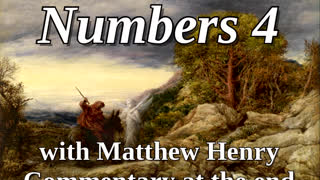 10:27
10:27
Jesus Answers Prayer
2 years ago📖🕯 Holy Bible - Numbers 4 with Matthew Henry Commentary at the end.
11 -
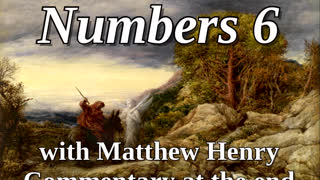 8:54
8:54
Jesus Answers Prayer
2 years ago📖🕯 Holy Bible - Numbers 6 with Matthew Henry Commentary at the end.
25 -
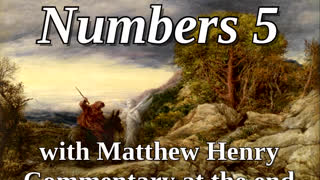 8:30
8:30
Jesus Answers Prayer
2 years ago📖🕯 Holy Bible - Numbers 5 with Matthew Henry Commentary at the end.
18 -
 10:26
10:26
Jesus Answers Prayer
2 years ago📖🕯 Holy Bible - Numbers 35 with Matthew Henry Commentary at the end.
29 -
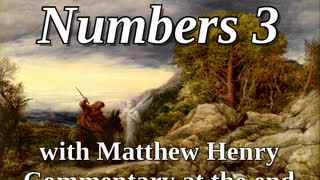 9:45
9:45
Jesus Answers Prayer
2 years ago📖🕯 Holy Bible - Numbers 3 with Matthew Henry Commentary at the end.
40 -
 11:33
11:33
Jesus Answers Prayer
2 years ago📖🕯 Holy Bible - Numbers 31 with Matthew Henry Commentary at the end.
45 -
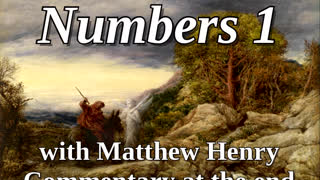 10:34
10:34
Jesus Answers Prayer
2 years ago📖🕯 Holy Bible - Numbers 1 with Matthew Henry Commentary at the end.
24 -
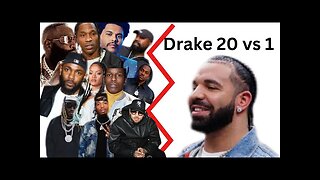 6:20:00
6:20:00
Akademiks
16 hours agoDrake Declaring WAR on all his OPPS? Joe Budden Responds to Cardi B. J Prince Jr ready 2 go war??
127K51 -
 29:52
29:52
Stephen Gardner
14 hours ago🔴The story just got worse...there's no way he acted alone AGAINST TRUMP!
99.7K803 -
 1:57:30
1:57:30
Donald J. Trump
21 hours agoLIVE: President Donald Trump & VP Nominee, Senator JD Vance in Grand Rapids, Michigan
603K826